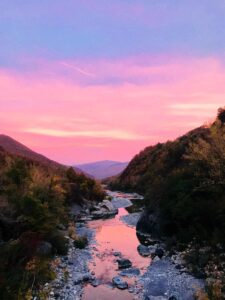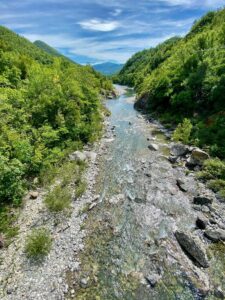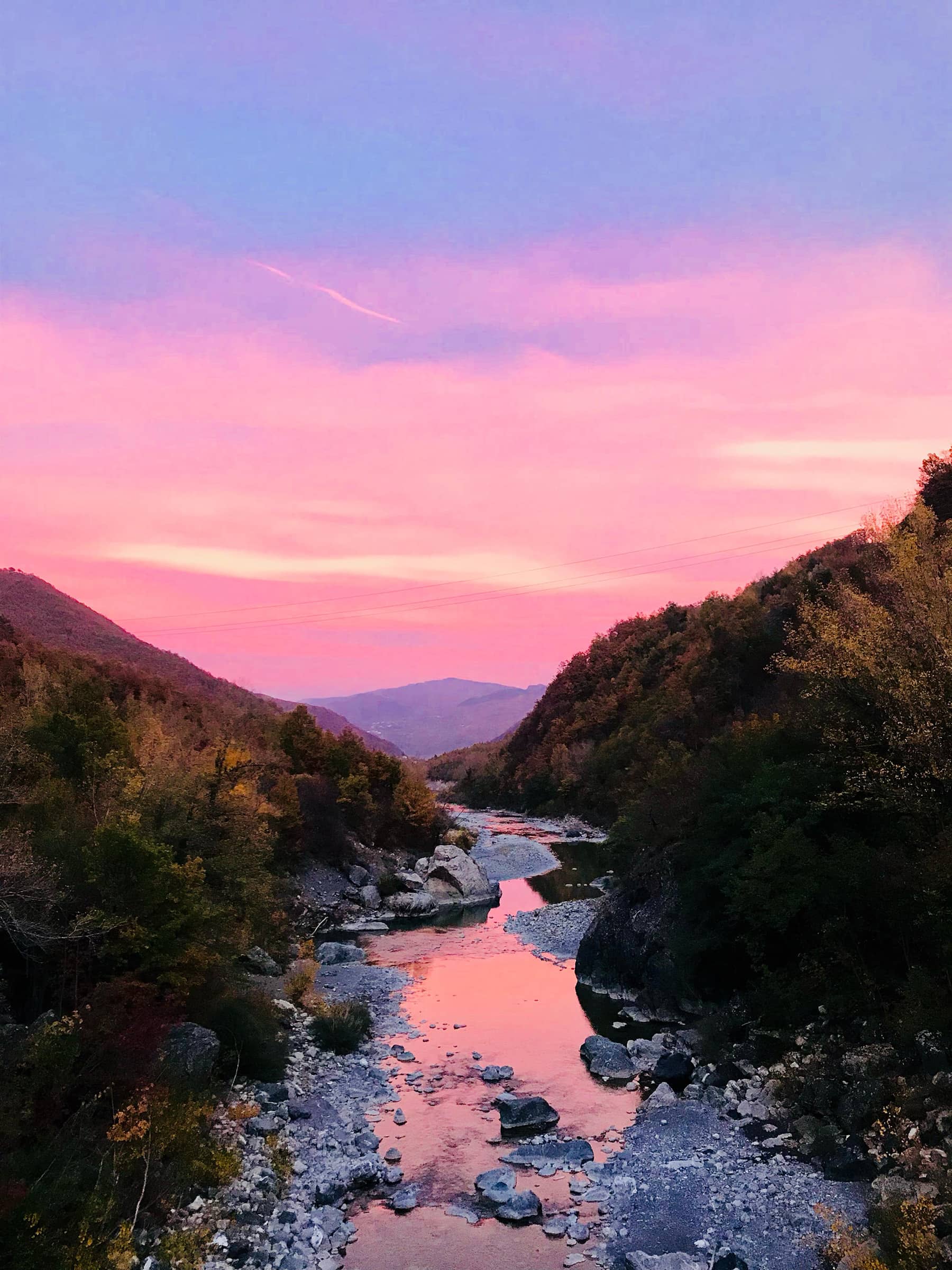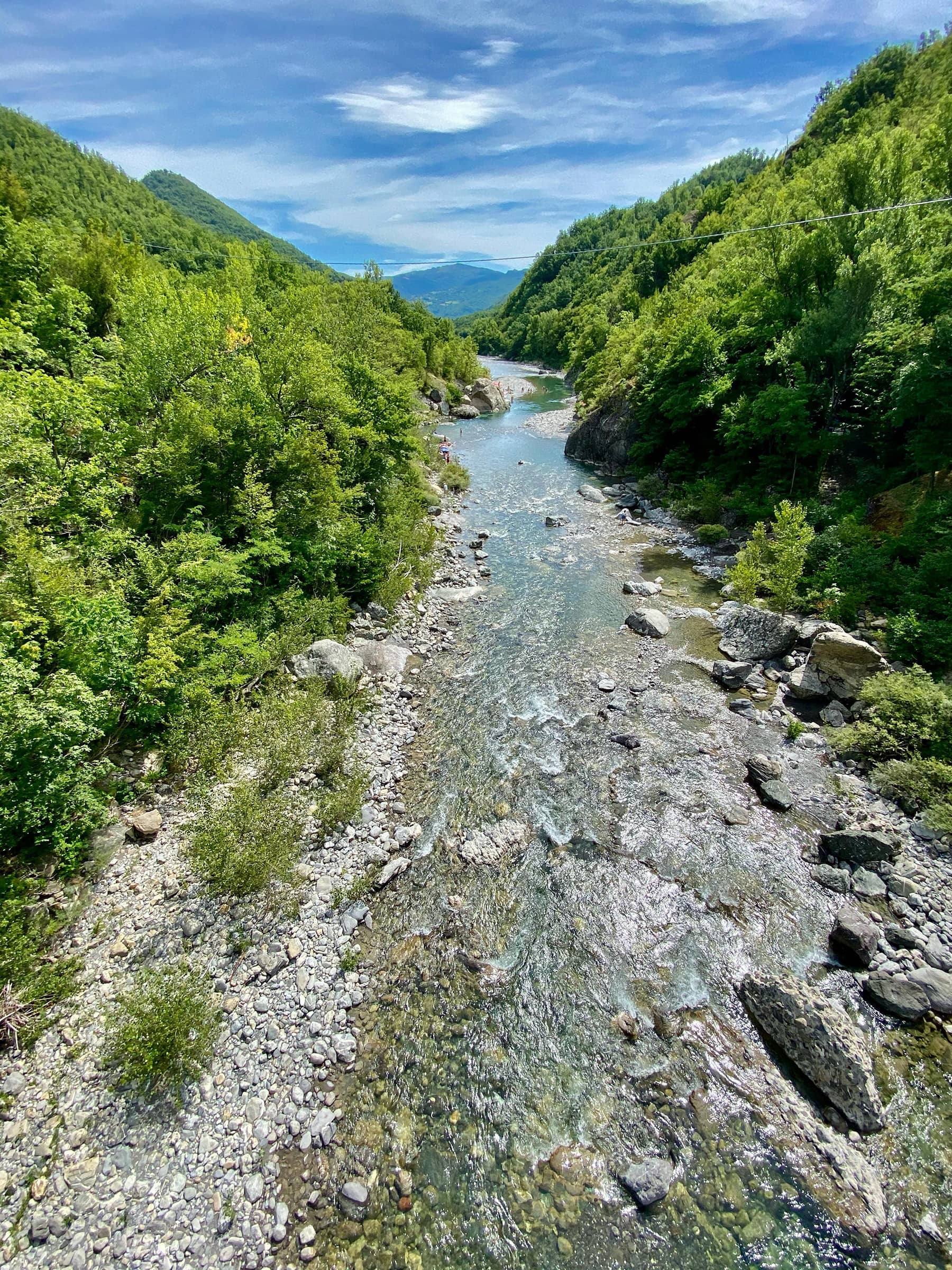In ancient times, this area was inhabited by those proud Ligurian tribes that Roman writers defined as indomitable and who provided aid and guides to Hannibal during the Second Punic War. In fact, there is still a path in the mountains called “Hannibal’s Road”. In a military map by the Roman army, relating to the IX Regio and the route of the Via Aemilia Scauri, the town of Precele, the current Pregola, is indicated, which has always dominated the Staffora Valley from the top of the “black stones”, from which it takes its name: Prea Groa means, in fact, ‘corba stone’, i.e. ‘black stone’. Pregola was already known in the 10th century when it was part of the Monastery of San Colombano in Bobbio. It was Federico Barbarossa who ceded Pregola to the Malaspina family who remained in possession of it until 1789, the year in which it was incorporated by the Marquisate of Santa Margherita. The ancient town, with castle and church, stood on a rocky spur above the current one. The current church was built in 1600, on the ruins of an oratory dedicated to San Rocco.
What to see in Brallo di Pregola
Located in the hamlet of Someglio, externally the building has not changed its appearance since its beginnings, the façade remains in exposed stone, as is the Romanesque bell tower which fascinates with its majesty: it is approximately 14 meters high, with a square plan with sides of approximately 3.40 metres. The flooring is made of local stones and stone is the main material that forms the main altar. With a single nave, on the walls there are two oil paintings representing San Fermo and the Saints Gervasio and Protasio with Saint Ambrose. The complex, of medieval origin, is the oldest parish church in the area: this, as was typical, was built along an important road, and the trade in salt and spices passed through here, coming from Genoa and heading towards Milan. The baptismal font, found after excavations, is made of corroded local stone.
The buildings faithfully reflect the character and mood of a landscape marked by the rural cultural imprint, left by those who were once the most active workers on site, that is, the farmers and charcoal burners. In the hamlet of Ponti many testimonies are jealously preserved and for this reason the Museum of Memories was established, an open-air exhibition which includes a water mill from the early twentieth century, a charcoal pit, an ice house and a space in beaten clay called by the locals “U Balu”. One of the most precious treasures kept inside this museum is the testimony of the charcoal burners’ trade. Then there is the wash house, a symbol of community and sharing; the icebox is a true example of the ingenuity and pragmatism of past generations in order to preserve food and drink. U Balu is the space where the community gathered for moments of leisure and celebration.
Left without inhabitants due to the threat of a landslide, today it is one of the most important abandoned villages in Lombardy.
A Center for Sports Activities
Brallo di Pergola is an important centre for sporting activities, especially for those who practice skiing, thanks to the Cima Colletta facilities which also include a ski lift serving two slopes of approximately 700 meters and a cableway for the little ones. The ski lifts are located in Passo Penice and Pian del Poggio; Snowmobile excursions are frequently carried out in the Piano di Prodongo area: swimming, canoeing and sport fishing activities also take place along the River Trebbia.






